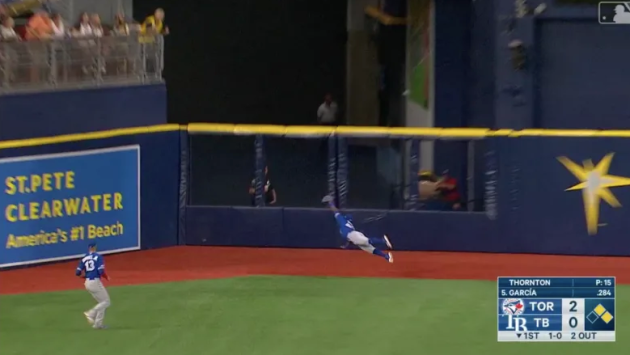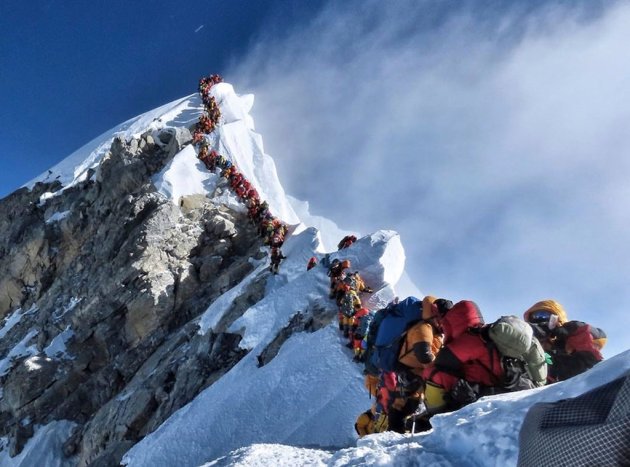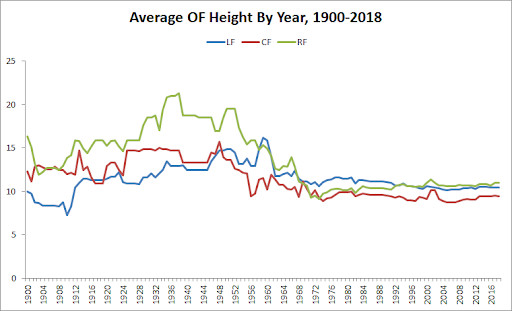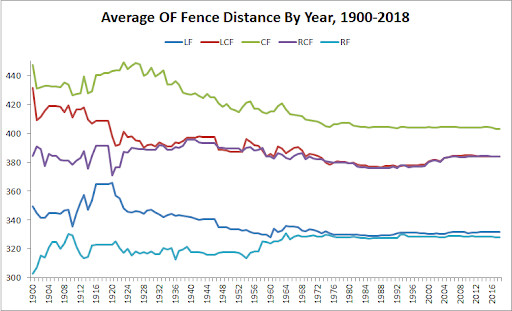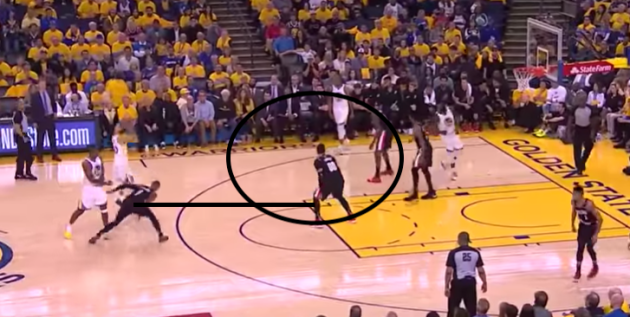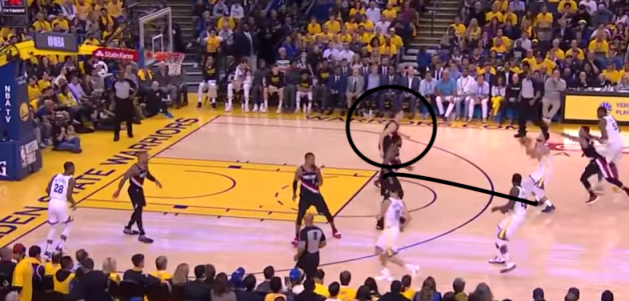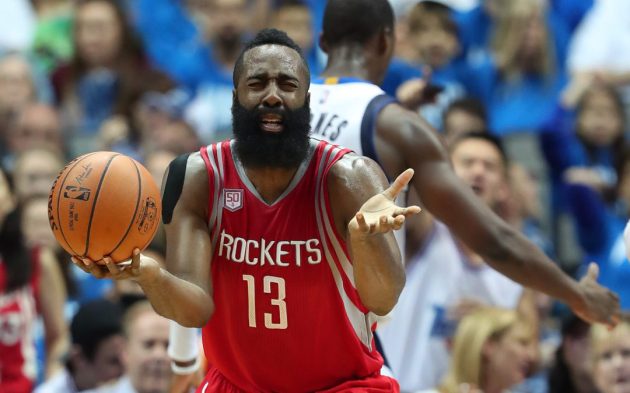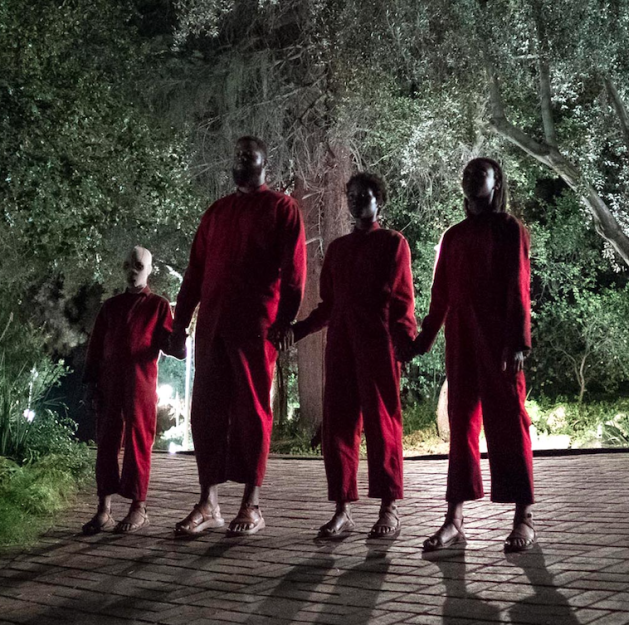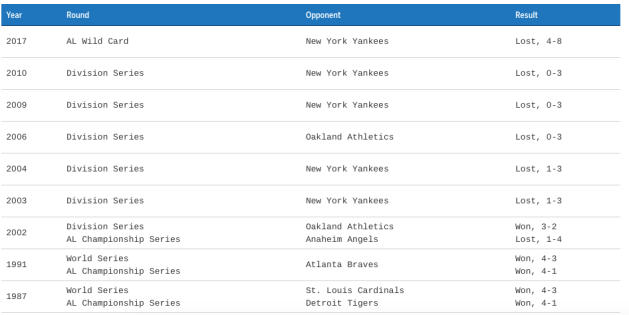He…caught that?
Is “Post-Access Journalism” Coming to American Sports?
In the U.S., we are accustomed to a couple scenes after a game: the first, players/coaches at a podium, often bored out of their minds, answering questions that are rarely interesting and even more rarely results in an interesting answer. The second, players, often half naked and surly, sitting or standing at their locker, microphones stuffed in their faces, while they answer even less interesting questions and give even less interested answers. I have never understood the value of this, personally, because of how rarely we learn anything worth knowing, but the leagues mandate this media access in order to promote the league, its teams, and its players.
As the Ringer’s Bryan Curtis writes, the same is not true in Europe. Soccer leagues and teams do not mandate media availability. Because player discussion with media are not mandated, they are rare, and the results are rather unexpected. When a soccer player or coach does speak to the media, the media companies and reporters realized it was in their collective best interest not to run straight to Twitter with any quotes they might get. Instead they voluntarily agreed to embargo such information. Here’s an example:
After a Saturday soccer match, a club’s manager gives a press conference in front of the TV cameras in the same manner Steve Kerr will this week. What the manager says can be used immediately, on TV or on Twitter. Then, the manager may hold a separate meeting with newspaper writers and answer more questions. What the manager says in that interview is embargoed, by agreement of the writers, until 10:30 p.m. that night. No tweets, no early posts allowed.
Sometimes, the various press conferences contradict one another. As ESPN soccer writer Mark Ogden told me: “The gray area comes when [José] Mourinho says in the open press conference, ‘Paul Pogba isn’t trying hard enough.’ And then in the embargoed section he would go further, saying, ‘Paul Pogba’s not trying hard enough because we’ve had a big row. He hates me.’”
When that happens, a soccer writer has a choice: tell half the story immediately or tell the whole thing at 10:30 p.m. “Embargoes don’t really do any massive harm,” Smith said. “But there are times when you think, ‘Actually, I am almost going to write something that I now know is either incomplete or runs contrary to the full picture, because I have more of the picture.’ That’s a weird thing to do.”
The reasons for the embargoes are many, but the main two are these:
[H]olding news till 10:30 p.m. helps keep the print product alive. If a reader finds a fresh story on the back page of the morning paper, the thinking goes, they’ll be more tempted to buy it. “We willfully function as analog rather than as digital,” Smith said. “But we’re British and we’re a very traditional people.”
…
Another reason to have embargoes is the idea that readers will drown in the amount of content created by an all-timer like Liverpool-Barcelona. The news and quotes are more likely to be savored if they’re doled out in installments. Yet another reason, Burrows noted, is that holding news gives reporters a chance to write a proper piece instead of a glorified tweet.
As a consumer, some of this I find refreshing. If you check Twitter after a baseball game, the same 4-6 writers all report the same quote from the same players or coaches within seconds of each other. It’s sorta wild. And it makes me wonder if all the Giants beat writers, for example, wouldn’t be better off dividing up the work, so to speak.
But there’s a dark side to all this.
First, the lack of access to players causes reporters to ask questions well ahead of when they normally might, and then ration information they receive. They might not get to speak to that player again for weeks, so they have to get all the answers they can when they can, and then hold that information and slowly divvy it out until the next time they speak.
Second, it has given rise to bad journalism. Players never have to speak to the media, and so they can leverage that power into granting softball interviews, where they (read: their agents/advisors) get to review and edit answers, and where they even get multiple plugs for some god awful product they are endorsing. Instead of an interview, you end up with sponsored content, like this:
First, they might ask for a branded photo to run with the article. Over coffee, Liew pulled out his phone to show me a Daily Telegraph profile he’d written of Manchester United (then Cardiff City) manager Ole Gunnar Solskjaer in 2014. The interview had been organized by Barclays, a Premier League sponsor. In the photo, Solskjaer was holding a soccer ball with Barclays’ #YouAreFootball hashtag helpfully pointed at the camera. “This is nice and subtle, isn’t it?” Liew said.
Here’s that photo:
LOLOLOLOL. And the plugs continue:
That’s one plug. Players or manager representatives may also ask for a mention in the text of the story. (“Solskjaer seems relaxed now, having taken some time out to field questions from grassroots coaches as part of a Barclays community event.”) Finally, they ask for the coup de grace: another mention of the product right at the end of the article.
“That’s called a credit,” Liew said.
“A credit?” I said.
“A credit, yeah,” Liew said. “Almost like a shout-out to mom and dad.”
And here’s the “credit”:
Ole Gunnar Solskjaer was speaking at a Barclays community event. This season Barclays is thanking fans, community heroes, players and managers for making the game what it is. Join the conversation using #YouAreFootball.
Yikes, that’s gross. But what choice do they have?
“That’s why the whole access game is so corrupt, in a way,” said Liew. “It’s vested interests flogging bad copy to extremely pliant sportswriters.”
And I was talking to good writers, who were queasy about these trade-offs, rather than tabloid scufflers, who might accept them without thinking twice. But even the good writers said a level of branding had crept into the paper.
“We would still resist that complete takeover of the copy,” said Northcroft of The Sunday Times. “But realistically we would bend, and certainly articles would have some kind of … branded photo and maybe a mention, either in the copy or at the end.”
Liew said: “If you get an exclusive interview with Messi, and his agents say, ‘Can we look at the quotes before?’—I know we talk about principles, but we’re going to say yes to that. And most people are—and try and keep it quiet. That’s the reality of it.”
So, as little value I had seen in post-game interview, this does sound waaaaaay worse. Curtis writes this as a cautionary tale for American sports, especially as a few NBA players have recently take more agency with regard to that mandated media “availability”. But I’m not so sure, so long as the league mandates remain in place. Still, this was a fascinating read. -TOB
Source: “‘The Bane of My Existence’: U.K. Sportswriting’s Access Crisis”, Bryan Curtis, The Ringer (05/29/2019)
PAL: This was a depressing read. With so many rules and embargoes, what the hell is the point of covering a team?
The Last 50
Loved this story. In 2012, the Major League draft shrunk from an almost unfathomable 50 rounds down to a still astounding 40 rounds. By comparison, the NFL has 7 rounds, and the NBA only has 2 rounds. A hell of a lot of players are needed to to fill the rosters of all the minor league affiliates. The San Francisco Giants have 8 – count them 8 – minor league teams.
This reduction from 50 to 40 eight years ago might seem insignificant, but for Jarrod Dyson. Giants fans remember him as a Royal, but Dyson is now a bench player for the Diamondbacks. More historically significant, Jarrod Dyson is the last standing active MLB player drafted in the 50th round or later. More than a number, as The Athletic’s Zach Buchanan underscores in his story, Dyson represents a bygone era of scouting (and hiding) a gem.
Brian Rhees was a first year scout in Mississippi. Like a hell of a lot of late-rounders, Dyson was noticed by accident. Once Rhees graded Dyson with 80 speed (scouts rate on a 20-80 scale, which I don’t understand), and once he realized no one else was onto Dyson, Rhees kept his discovery a secret. Dyson really couldn’t hit or really throw all that well, but he could run.
So the 2006 draft begins. In the late rounds of the draft – the real late rounds – where the chances of a player actually making it to the bigs is so slim, teams are really trying to fill roster spots on their various minor league squads. Rhees, who was following along on the computer, noticed the Royals had gone into the roster-filling mode and still hadn’t picked Dyson, his late round sleeper.
What follows is what some folks describe as fate. I describe it as my favorite writing from the story. It just zooms.
Deric Ladnier was going to give the last pick of the 2006 draft to scout Johnny Ramos.
It was going to be some high school pitcher from Puerto Rico, as far as the former Royals and current Diamondbacks amateur scouting director can remember. Named Pérez, maybe? The exact details elude him. After all, there’s not much at stake that late in the draft. “The 50th-round pick in the draft never plays in the big leagues,” Ladnier says. “So, I’m going to do a favor.”
Ladnier had that pitcher’s draft file in his hand, ready to give to Stewart to announce the final pick, when Rhees called into the draft room. The scout was worked up, sounding like a man frantically trying to wake someone asleep inside a burning building. All draft, his nerves had been fraying.
Rhees was following the progress of the draft at home on his computer. With about five rounds to go, Dyson’s name still hadn’t been called. “It just kind of appeared to me that we were drafting for the sake of pulling names out of a hat,” Rhees says. “I know we weren’t, but that was the feeling you got. There were times when you’d hear a name and go, ‘I saw that guy! He’s terrible! What are we doing?’” He bemoaned to his wife what he predicted would be the premature death of his scouting career. “She’s a bench player, so she knows how to rag,” Rhees says. “She just shrugged her shoulders and looked at me and said, ‘There’s always Home Depot.’”
He wouldn’t go so quietly. He picked up the phone and dialed the draft room, alerting them to the fact that Dyson remained on the board. He was given the brush-off. The selections ticked by, the 47th round, the 48th, the 49th. “At this point, I’m mad,” he says. “I’m like, ‘C’mon, that’s the groundkeeper’s nephew. What are we doing here?’” Once again, he dialed the draft room in Kansas City. Vizcaino picked up. “I had a unique relationship with Junior because I could just kind of yell,” Rhees says. “Like, ‘Junior, what the hell are we doing? Dyson! Dyson!’ Then I heard him go, ‘Deric! Eighty tool! Eighty tool!’”
An 80-grade tool was never available that late. Dyson’s speed was special, and it made sense to take a flyer on special. But what also stood out was how much Rhees cared about the pick. Who gets worked up over a 50th-rounder? “Nobody is fighting for their player in the 50th round,” Ladnier says. “Nobody. We’re looking for warm bodies.” So, Ladnier put down the file of that Puerto Rican pitcher, whoever he was, and handed Dyson’s to Stewart.
There are so many reasons why Dyson shouldn’t have made it, including three failed drug tests (it’s not that cut-and-dry, trust me), yet he’s won a World Series and earned nearly $15MM to date. In today’s world, the idea of a guy with an 80-grade skill still being available in the last round is preposterous. Any cursory ‘prospect’ search of Instagram will kick up a wide range of skill levels.
A treat of a story to read. Cheers, to Jarrod Dyson! – PAL
Source: “The Unlikely – But Maybe Destined – Career of Jarrod Dyson, the Last 50th-rounder Standing”, Zach Buchanan, The Athletic (05/29/19)
TOB: Really good article, and loved Phil how pulled it all together.
Break the NCAA Wheel
RJ Hampton is ESPN’s #5 ranked basketball recruit in the country. He had offers to just about everywhere, including Duke, Kentucky and Kansas. But when he weighed whether to play for an “education” or go and get paid, my dude chose wisely. Hampton opted out of the NCAA’s ridiculous system and instead chose to sign a one-year contract with the New Zealand Breakers of the Australian pro league, the NBL. I loved that Hampton decided to announce this decision live on ESPN, under the guise of choosing between three colleges. Hah. What a bad ass.
The NBL has wisely positioned itself as an NCAA alternative for would-be-one-and-done players. They recently launched the Next Stars Program, allowing teams to invite top caliber American high school seniors and “sign them to a short-term contract without counting against the team’s quota of three international players.” Players in the Next Stars Program get paid $100,000, and are eligible to enter the NBA Draft after one year.
If the NCAA won’t pay players, or at least allow players to cash in on endorsements, it deserves to die, and I hope this is the first of many players who tells the NCAA to pound sand.
As an aside: it came out Thursday that Hampton knew of his decision for a month, but didn’t tell the coaches recruiting him. I would presume this was to allow the contract to be hammered out with his NBL team. But ESPN’s Doug Gottlieb decided this was the height of offense, and (in a tweet he deleted hours later) called Hampton “classless” and what he did a “DB maneuver”. WHICH IS FUNNY, DOUG. Because I recall when YOU were in college and you stole a teammate’s credit card, racked up a thousand dollars in charges, which is CREDIT CARD FRAUD, DOUG, and got kicked out of school.
Thought we forgot about that one, DOUG? And as I tweeted Thursday to someone who said “it was 20 years ago and it was only $1,000” (LOL): If there’s anyone in college basketball who should be driving the “Kids make mistakes!” train, it’s Doug Friggin Gottlieb. Instead he calls a guy classless and a douchebag.”
You suck, Doug Gottlieb. -TOB
Source: “Top Recruit Stiff-Arms the NCAA”, Tom Ley, Deadspin (05/28/2019)
PAL: Yeah, I love how an adult ripped a teenager for being classless while also calling the teenager a douchebag. Also, one does not drive a train.
Also, and completely related to NCAA stuff, did you know the Twins are 19 friggin’ games over .500?
TOB: First of all:
And second of all, don’t go suckin your popsicle just yet. The NL Standings on July 10, 2016:
Giants went 30-42 the rest of the season.
Everest’s Graveyard
The traffic jam at the peak of Mount Everest, captured in what looks like a doctored photograph, has been quite the story this week. A cocktail of a corrupt government handing out permits willy nilly, opportunistic expedition companies, and irrational people thick with cash and thin on mountaineering experience has created a Disney-like line of people waiting to summit Everest. In other words, do the thing they will slip into at every bar, graduation party, and wedding reception encounter for the rest of their respective lives.
While there is altogether too many folks trying to summit during the short, May window when the weather breaks enough for the best chance at the summit; increasingly warm temperatures have also revealed reminders of the risk involved for even the most experienced mountaineers. Several dead bodies from previous failed expeditions are being uncovered. They serve both as landmarks and perhaps ominous indicators of global warming at one of the most extreme places on earth.
In the last few seasons, climbers say they have seen more bodies lying on the icy slopes of Everest than ever before. Both the climbers and the Nepalese government believe this is a grim result of global warming, which is rapidly melting the mountain’s glaciers and in the process exposing bones, old boots and full corpses from doomed missions decades ago.
The Nepalese government is struggling with what to do. More than 100 bodies may be lying on Everest, and there is an open debate about whether to remove them or leave them be. Some climbers believe that fallen comrades have become a part of the mountain and should remain so. A number of the bodies are remarkably well-preserved: Sun-bleached parkas outline faces frozen into the color of charcoal.
Jon Krakauer’s Into Thin Air was my first exposure to the business end of Everest. As enthralling as the objective is, it seems the purity of this pursuit was lost long ago, if it existed much at all (I mean, shouldn’t we be remembering the sherpas?). I can’t think of a more appropriate symbol of that commercializing of an ambition than a traffic jam at the top of the world stepping amongst the frozen dead. – PAL
Source: “As Everest Melts, Bodies Are Emerging From the Ice”, Bhadra Sharma and Kai Schultz, The New York Times (05/30/19)
The State of the NBA
I’m generally not a fan of the Ringer’s Chris Ryan. He’s grates on every Ringer podcast he appears on – always yes-man-ing Simmons, interrupting people who are far smarter than he is, even while they make an interesting point, and he tried waaaaaaaaay too hard to sound like he know what he’s talking about when discussing basketball by using dumb initials or some other crap.
BUT. This was a really interesting piece by Chris Ryan and Justin Verrier, where the two discuss the state of the NBA, how free agency discussions have taken over the entire league’s discourse and rendered the play on the court an almost after thought, how players over the last decade are treating their careers more like European-based soccer players, and what teams face and how they should react to players taking greater agency over their place of employ (sensing a trend here?). Here’s one passage I especially liked from Verrier:
I feel for Giannis….He and the Bucks smashed preseason expectations, earning the league’s best record and him a spot on the MVP ballot along the way, yet a loss in May 2019 is instantly warped into a footnote for his decision in July 2021. Everything moves too damn fast. But the accelerated timeline is as much a product of his peers’ decisions as it is today’s media culture. Davis can’t become a free agent until July 2020, yet he orchestrated his exit strategy in January 2019; Irving asked out of Cleveland two years before he could enter free agency; and so on. It’s in teams’ best interest to get some sort of payout for their damages, so the process of trading a disgruntled star starts way earlier than you’d think. Next season is the Bucks’ proving grounds, whether they want to admit it or not, and they’re heading into an offseason when almost every helpful player is a free agent. There is a good chance that Milwaukee’s window has closed, just days after we coronated them as the NBA’s next dynasty.
It’s a really good read. -TOB
Source: “A Rational Conversation About What Happens When NBA Titles Are Not Enough”, Justin Verrier and Chris Ryan, The Ringer (05/29/2019)
ACHTUNG! NO FUN SHALL BE HAD IN THE NBA FINALS!
During the Eastern Conference Finals, Drake, the rapper (not Drake, the kid from my son’s soccer team who my son and I once saw on BART and tricked my wife into thinking we had seen Drake, the rapper), a Toronto native and Raptors Super Fan, had a lot of fun.
Listen to the announcers enjoy that. It’s fun! What’s wrong with fun! But there will be no joy in the Finals, as Drake has been called to the principal’s office and threatened with suspension for being a very bad boy who has too much fun, young man. Per NBA Commish and hater of fun, Adam Silver:
I think there’s a line too in terms of sitting right on the floor, in terms of engagement whether it’s with the referees and players on other teams. It’s hard to calibrate sometimes exactly where that line is and I think he has a better understanding now of where that line is.
And his manager Future [Adel Nur] who sits with him too, we’ve all talked, all of us together, since then. There’s been conversations that’s taken place. It’s more just, let’s find where that right line is.
Boo. As MLB says: Let the kids play! -TOB
Source: “Drake And The Raptors Both Got A Talking-To From The NBA”, Giri Nathan, Deadspin (05/30/2019)
Video of the Week
Tweet of the Week
PAL Song of the Week: Old Crow Medicine Show – “Temporary Like Achilles (Live)”
Like what you’ve read? Let us know by following this blog (on the right side, up near the top), or:
Email: 123sportslist@gmail.com

